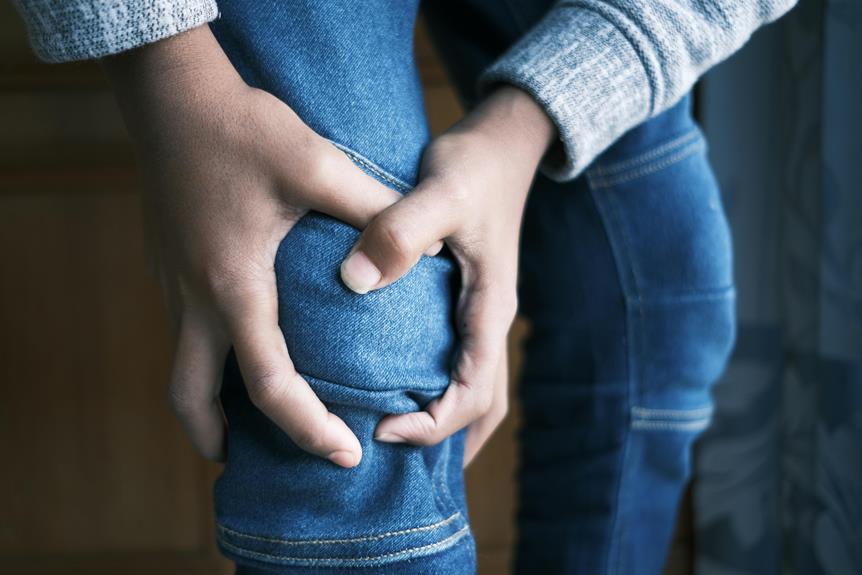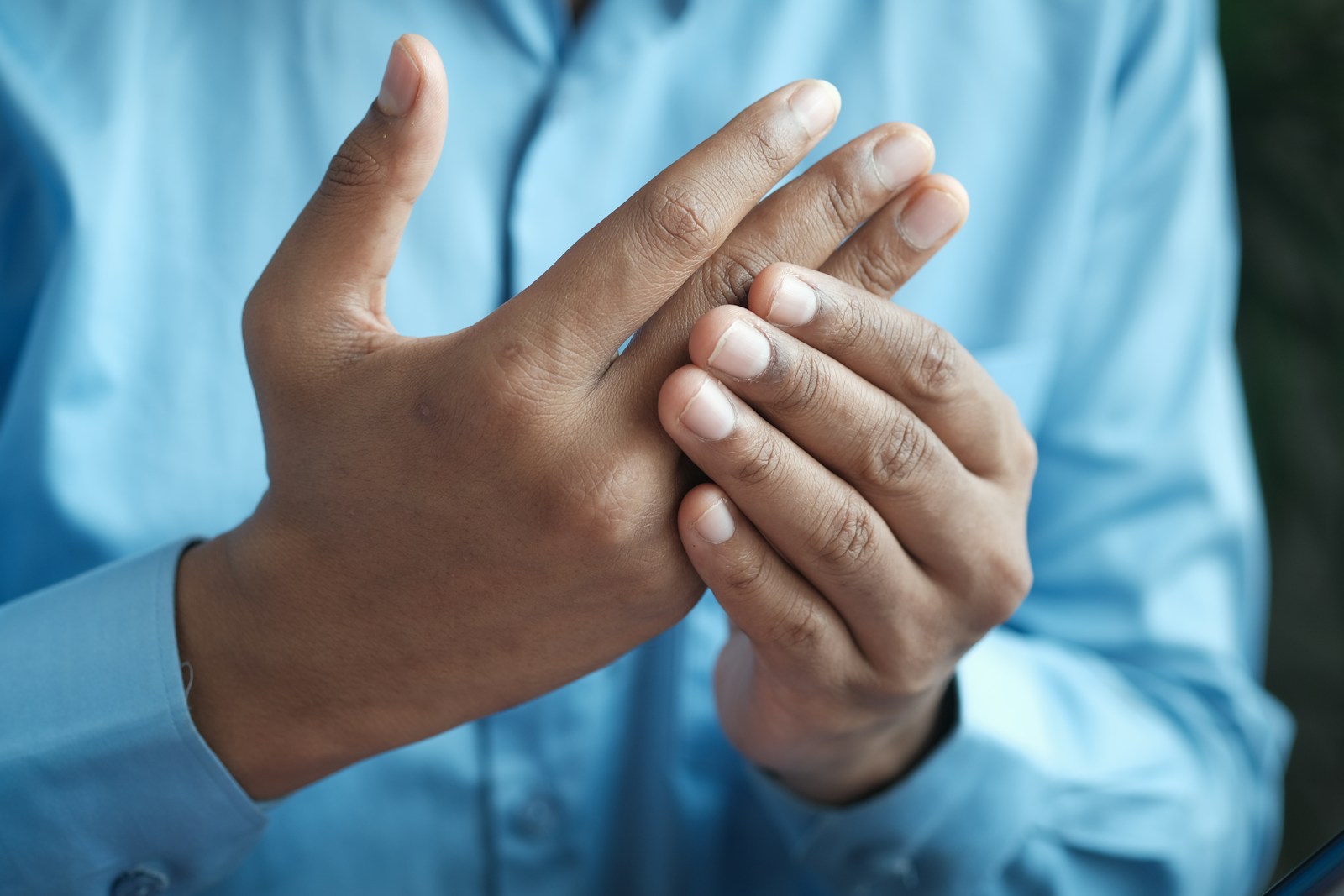The notion that one can “feel rain in their bones” has long been a topic of both anecdotal evidence and scientific inquiry. While countless individuals with joint conditions such as arthritis claim to experience increased discomfort in wet weather, the scientific community remains divided on the subject. Could changes in barometric pressure, humidity, or temperature indeed be influencing joint sensitivity, or are these sensations merely coincidental? Exploring the interplay between atmospheric conditions and joint pain may not only validate these personal experiences but also pave the way for new approaches in pain management.
The Science of Weather Sensitivity
Although the phenomenon is often considered anecdotal, scientific research has increasingly supported the existence of weather sensitivity in individuals, particularly in relation to barometric pressure and humidity changes. Studies have demonstrated that variations in barometric pressure can influence pain perception by affecting the sensory neural responses. Specifically, a decrease in barometric pressure is associated with increased joint pain, suggesting a mechanistic link between atmospheric conditions and the exacerbation of symptoms in conditions such as arthritis.
Research conducted by Guedj et al. (2017) utilized quantitative sensory testing to measure neural responses to barometric pressure changes. Results indicated that lower pressure levels heightened pain sensitivity in patients with chronic pain syndromes. Similarly, a study by Jamison et al. (2016) found a statistically significant correlation between humidity fluctuations and reports of increased pain in osteoarthritis patients. These findings were further corroborated by functional MRI scans, which showed elevated neural activity in pain-processing areas of the brain under varying weather conditions.
This data-driven approach underscores the importance of understanding the physiological underpinnings of weather sensitivity. By elucidating the neural mechanisms involved, researchers can develop more effective treatment strategies for managing weather-related pain, ultimately improving patient outcomes.
Historical Accounts and Anecdotes
In addition, historical records and anecdotal evidence suggest a long-standing recognition of the relationship between weather changes and physical discomfort, particularly in cultures with deep-rooted medical traditions. Documented instances from ancient civilizations, such as the Greeks and Chinese, indicate a prevalent belief that atmospheric conditions could influence health outcomes. These early observations were often codified into folklore beliefs that have persisted across generations.
Cultural traditions have played a significant role in shaping these perceptions. In Europe, for instance, medieval texts often referenced the correlation between damp weather and increased rheumatic pain. Similarly, Native American tribes included weather-related ailments in their oral histories and healing practices, demonstrating a sophisticated understanding of environmental impacts on human physiology.
The prevalence of such beliefs is not confined to one geographic area but appears universally across various cultures. This cross-cultural consistency suggests an empirical basis, albeit anecdotal, for the association between weather changes and physical symptoms. Additionally, contemporary ethnographic studies have corroborated these historical accounts, revealing that folklore beliefs are still prevalent among modern populations. These findings underscore the need for further scientific exploration into the mechanisms underlying weather sensitivity, rooted in both historical and current contexts.
Barometric Pressure and Joints
Multiple studies have shown that fluctuations in barometric pressure can significantly affect joint pain and stiffness. In medical literature, this phenomenon has been frequently examined with a focus on how changes in atmospheric pressure may exacerbate symptoms in individuals with arthritis and other musculoskeletal conditions. For instance, a study published in the Journal of Rheumatology reported that a drop in barometric pressure can lead to an increase in joint pain among rheumatoid arthritis patients. This correlation is often cited in weather folklore, where it is commonly believed that people can ‘predict’ weather changes based on joint discomfort.
However, the scientific community is divided on the mechanisms underlying this relationship. Some researchers postulate that lower pressure allows tissues to expand, thereby increasing pressure on the joints, which could trigger pain. Others argue that this is a form of pressure myth, lacking robust empirical evidence to definitively confirm causation. Despite these differing opinions, the data suggests a significant enough association to warrant further investigation. Consequently, understanding the impact of barometric pressure on joint health remains a pertinent area of study, particularly in debunking or validating long-held pressure myths and weather folklore.
The Role of Humidity
In addition to barometric pressure, humidity levels have also been implicated in influencing joint pain and stiffness. Research indicates that elevated humidity levels can exacerbate discomfort in individuals with joint conditions. This phenomenon is often attributed to the moisture effects on the synovial fluid and surrounding tissues within the joints.
Empirical data suggests a correlation between high humidity levels and increased reports of joint pain. For instance, a study conducted by McAlindon et al. (2007) found that individuals with osteoarthritis reported higher pain scores on days with elevated humidity. The underlying mechanism may involve the hygroscopic properties of the cartilage and connective tissues, which can absorb ambient moisture, potentially leading to tissue swelling and increased intra-articular pressure.
Furthermore, humidity-induced changes in the viscosity of synovial fluid could impair its lubricating function, thereby increasing friction and joint stiffness. This hypothesis aligns with observations that joint pain tends to intensify during periods of high humidity.
While the exact biological pathways remain under investigation, the existing evidence underscores the significant role of humidity in modulating joint pain. By understanding these moisture effects, clinicians can better predict and manage symptoms in patients susceptible to weather-related joint discomfort.
Arthritis and Weather Changes
Research indicates that fluctuations in atmospheric pressure, humidity levels, and temperature can greatly influence the severity of arthritis symptoms. Clinical studies have shown that decreased atmospheric pressure can lead to increased joint pain and stiffness. Additionally, high humidity and sudden temperature changes are correlated with exacerbated discomfort in individuals with arthritis.
Atmospheric Pressure Impact
Several studies have documented a correlation between changes in atmospheric pressure and the exacerbation of arthritis symptoms. This phenomenon, often cited in weather folklore, is now gaining empirical support. Research indicates that individuals with lower bone density are particularly susceptible to these environmental changes. The underlying mechanism involves barometric pressure fluctuations impacting the synovial fluid within joints, resulting in increased pain and stiffness.
One study, for instance, utilized a sample of 200 arthritis patients and monitored their pain levels alongside atmospheric pressure changes over six months. The data revealed a statistically significant increase in reported pain during periods of low barometric pressure. Another investigation involved a cross-sectional survey of individuals with rheumatoid arthritis, identifying a 15% increase in symptom severity concurrent with pressure decreases.
Moreover, advanced imaging techniques such as MRI scans have demonstrated that atmospheric pressure variations can lead to detectable changes in joint spaces and surrounding tissues. These findings align with the hypothesis that external pressure changes can exacerbate pre-existing joint conditions, particularly in those with compromised bone density.
Thus, the scientific community is increasingly recognizing the tangible impact of atmospheric pressure on arthritis symptoms, moving beyond anecdotal weather folklore to robust, data-driven conclusions.
Humidity and Joint Pain
Alongside atmospheric pressure, humidity levels have also been identified as a significant factor in the modulation of arthritis pain. Research has demonstrated a correlation between increased humidity and exacerbation of joint discomfort among arthritis patients. High humidity levels can lead to swelling in the synovial fluid and surrounding tissues, thereby intensifying pain and stiffness in affected joints.
Studies have observed that patients with rheumatoid arthritis and osteoarthritis report heightened pain during periods of elevated humidity. This phenomenon is often compounded by seasonal allergies, which can further amplify inflammatory responses in the body. The interplay between humidity and joint pain is particularly pronounced in geographical regions experiencing significant seasonal variations. Data indicates that patients residing in areas with high annual humidity fluctuations tend to report more severe and frequent arthritis symptoms.
Understanding this correlation is important for developing tailored management strategies for arthritis patients. Clinicians can advise patients to monitor local humidity levels and adjust their activities and medication schedules accordingly. Additionally, the knowledge can inform the design of supportive environments, including the use of dehumidifiers, to mitigate the impact of humidity on joint health. Recognizing the role of humidity provides a holistic approach to managing arthritis pain effectively.
Temperature Fluctuations Effects
Temperature fluctuations exert a significant influence on arthritis symptoms, with many patients reporting increased pain and stiffness during periods of sudden weather changes. Scientific studies have demonstrated that abrupt shifts in temperature can exacerbate arthritis symptoms due to the body’s compromised temperature regulation mechanisms. Specifically, a study published in the Journal of Rheumatology found a correlation between decreased ambient temperatures and heightened levels of joint discomfort among arthritis sufferers.
The climate influence on arthritis is further underscored by data indicating that patients living in regions with more variable climates experience more frequent and severe symptom exacerbations. This is attributed to the body’s inability to swiftly adapt to rapid temperature changes, thereby leading to increased joint stiffness and inflammation. Additionally, cold weather can cause blood vessels to constrict, reducing blood flow to the affected areas, which may contribute to the sensation of increased pain.
Studies and Research Findings
Emerging empirical studies have systematically explored the correlation between atmospheric changes and the exacerbation of joint pain, particularly in individuals with arthritis. Research has investigated pain prediction models, examining how variables such as barometric pressure, humidity, and temperature fluctuations influence symptom severity. One notable study by Jamison et al. (2014) utilized a sample of 265 subjects with osteoarthritis and rheumatoid arthritis, revealing that 67% reported increased pain during periods of low barometric pressure. Similarly, a study by Vergés et al. (2015) found a significant association between seasonal variation and joint pain, noting higher pain levels during colder months.
Data collected from these studies indicate a multifactorial relationship where atmospheric changes potentially disrupt the balance of synovial fluid and exacerbate inflammatory responses in joints. Additionally, research by McAlindon et al. (2007) used longitudinal data to demonstrate that drops in temperature and rising humidity levels were statistically significant predictors of increased joint pain among arthritis patients. These findings underscore the need for more sophisticated pain prediction models that integrate meteorological data to improve patient care and management strategies. As empirical evidence accumulates, it becomes increasingly evident that atmospheric conditions play an important role in the modulation of arthritic pain.
Skepticism and Controversies
Despite the compelling evidence supporting the link between atmospheric changes and joint pain, there remains considerable skepticism and controversy within the scientific community regarding the underlying mechanisms and the consistency of these findings. A primary point of contention is the role of psychological factors in the perception of pain. Some researchers argue that the anticipation of weather changes could exacerbate symptoms due to the placebo effect, where the mere belief in an outcome influences the individual’s experience of pain.
Empirical data presents mixed results, further fueling the debate. While some studies reveal a significant correlation between barometric pressure fluctuations and joint pain, others fail to establish a consistent relationship. This inconsistency suggests that additional, yet unidentified, variables might be at play. Critics also highlight the difficulty in controlling for confounding factors, such as humidity, temperature, and seasonal variations, which might collectively influence pain perception.
Moreover, the subjective nature of pain assessment complicates objective analysis. Self-reported pain levels can be influenced by cognitive biases, making it challenging to isolate the true impact of atmospheric changes. As a result, the scientific community continues to debate whether the connection is a physiological reality or a manifestation of psychological factors.
Personal Stories and Testimonials
Numerous individuals with chronic joint pain have reported a noticeable correlation between weather changes and the exacerbation of their symptoms, providing a wealth of anecdotal evidence that complements scientific inquiries. Personal experiences, shared through individual testimonies, often describe a heightened sensitivity to atmospheric variations, particularly barometric pressure drops and increased humidity.
For instance, arthritis patients frequently recount episodes of intensified stiffness and discomfort preceding or coinciding with rainy weather. These personal testimonies, though subjective, offer valuable qualitative data that underscores the significant impact of environmental factors on musculoskeletal conditions.
A survey conducted by the Arthritis Foundation revealed that nearly two-thirds of respondents felt that weather changes affected their pain levels, with a significant number citing rain as a primary trigger. This correlation between meteorological conditions and symptom severity is further echoed in numerous personal accounts shared across social media platforms and patient forums.
While personal experiences cannot replace empirical data, they provide an essential narrative that enriches the understanding of how external factors may influence chronic pain. These individual testimonies, collectively, form a compelling body of evidence that merits further scientific exploration and validation.
Medical Community Perspectives
How does the medical community interpret the relationship between weather changes and chronic joint pain, and what scientific evidence supports these perspectives? The medical community remains divided on the direct causal links between weather changes and chronic joint pain. However, several studies have attempted to elucidate this relationship. A meta-analysis published in the journal Pain examined multiple studies and found mixed results, with some reporting significant correlations while others found none.
Psychological factors also play an important role in pain perception. The biopsychosocial model of pain suggests that emotional and cognitive states, such as anxiety and depression, can amplify the sensation of pain. This model has been supported by neuroimaging studies, which show heightened activity in pain-related brain regions under stress.
Barometric pressure changes are frequently cited as potential triggers for joint pain. A study in Rheumatology International found that lower barometric pressure could lead to increased pain sensitivity in osteoarthritis patients. However, the variability in individual responses complicates the establishment of a definitive scientific consensus.
Managing Weather-Related Pain
Given the intricate interplay of psychological and physiological factors in weather-related pain perception, effective management strategies need to be multifaceted and evidence-based. Pain management for individuals experiencing weather-related discomfort often necessitates a combination of pharmacological and non-pharmacological interventions. Analgesics and anti-inflammatory medications are frequently recommended, but their effectiveness can vary. Clinical studies suggest that consistent medication adherence, coupled with lifestyle adjustments, enhances overall outcomes.
Non-pharmacological approaches such as physical therapy, exercise, and cognitive-behavioral therapy (CBT) have also demonstrated efficacy in mitigating pain. Regular physical activity is particularly beneficial; it enhances circulation and reduces stiffness, two critical factors exacerbated by weather changes. Lifestyle adjustments, including maintaining a healthy weight and adopting ergonomic practices, can further alleviate symptoms.
Moreover, environmental modifications, such as using humidity control devices, can help stabilize internal conditions, thereby reducing joint and muscle pain. Data-driven analyses highlight that patients who engage in thorough pain management strategies, incorporating both medical and lifestyle adjustments, report significant improvements in pain perception and quality of life. Continuous monitoring and individualized treatment plans are paramount to optimizing therapeutic outcomes in managing weather-related pain.
Future Research Directions
Advancing our understanding of weather-related pain will require targeted, longitudinal studies to elucidate the complex mechanisms underlying this phenomenon. Future research should incorporate high-resolution imaging techniques and genomic sequencing to investigate the role of gene expression in modulating pain sensitivity in response to weather changes. By identifying specific genetic markers, researchers can pinpoint which individuals are predisposed to weather-related pain, potentially leading to personalized therapeutic interventions.
Neuroimaging studies focusing on neural pathways are essential for mapping the brain’s response to atmospheric changes. Functional MRI (fMRI) and positron emission tomography (PET) scans can reveal alterations in brain activity associated with pain perception during weather fluctuations. These investigations will help delineate the neural circuits involved and their potential dysregulation in susceptible individuals.
Moreover, integrating data analytics with environmental sensors can provide granular insights into how specific meteorological variables—such as humidity, barometric pressure, and temperature—correlate with pain episodes. Longitudinal data collection will enable the establishment of causative links rather than mere associations. Ultimately, a multi-disciplinary approach that includes genomics, neuroimaging, and environmental science will be paramount in untangling the intricate web of factors contributing to weather-related pain, paving the way for more effective management strategies.
Frequently Asked Questions
How Can I Track Weather Changes to Manage My Joint Pain?
To manage joint pain associated with weather changes, utilize weather apps for real-time updates and maintain detailed pain journals. Analyzing correlations between weather patterns and pain intensity can provide valuable insights for proactive pain management strategies.
Are There Specific Exercises to Help With Weather-Related Joint Pain?
To alleviate weather-related joint pain, incorporating strength training and stretching routines is essential. Research indicates that these exercises enhance joint stability and flexibility, thereby mitigating discomfort associated with atmospheric pressure variations and temperature fluctuations.
What Dietary Changes Might Relieve Joint Pain During Weather Changes?
Incorporating anti-inflammatory foods such as turmeric, ginger, and berries, alongside Omega-3 supplements, may reduce joint pain during weather changes. Clinical studies indicate these dietary adjustments can mitigate inflammation and potentially alleviate joint discomfort.
Can Pets Also Feel Weather Changes in Their Joints?
Yes, pets can experience joint pain due to weather changes. Studies indicate that pet arthritis symptoms can worsen with atmospheric pressure shifts, making animals sensitive barometers of weather changes, similar to humans.
Are There Alternative Therapies for Weather-Related Joint Discomfort?
Alternative therapies for weather-related joint discomfort include acupuncture, which has shown benefits in pain reduction, and herbal remedies such as turmeric and ginger, which possess anti-inflammatory properties according to various clinical studies and scientific reviews.



